
This week's Dance Party is particularly apropos, I think, as it illustrates the skewed view Christians sometimes have toward Jews. This has been on my mind lately, as I've been working on a project which reflects that theme. A Modest Suggestion wrapped filming yesterday, and I bet I'll be writing about our final two days on set, before I can properly put the project to bed. I can already feel that letdown actors usually feel at the end of a project, though this is the first time I have felt it for a film gig. But this is also the first time I have felt part of a film team, rather than just a hired gun, so I guess I should not be surprised to be feeling the blues a bit.
But for today, I have a Dance Party to explain.

I mentioned in a previous entry that A Modest Suggestion has already generated a bit of controversy, and one particularly vivid bigot bemoaned the fact that one of our Jewish stars, Mendy Pellin, was surrounded by a "horde of Goyim." Looking back on the weeks of the shoot, I have to say I wear that title, as a member of the horde of Goyim, with some pride. It has been enlightening for this Presbyterian WASP to interact with this group of Hebrews so intimately. Our director, Arnon, is what we used to call, when I was growing up in the lily-white suburbs of upper-middle class Atlanta, an orthodox Jew. I imagine there is a better, more politically correct moniker these days, for a gent who always wears his yarmulke (in Arnon's case, always color coordinated with his coat, sweater, and/or tie) and who observes the sabbath...well...religiously. It has been one of the surprising, but not unwelcome, aspects of our shoot, that we could always count on being released from the set early on Friday, and would have every Saturday off, to accommodate any who were celebrating shabbos.
Jew. I imagine there is a better, more politically correct moniker these days, for a gent who always wears his yarmulke (in Arnon's case, always color coordinated with his coat, sweater, and/or tie) and who observes the sabbath...well...religiously. It has been one of the surprising, but not unwelcome, aspects of our shoot, that we could always count on being released from the set early on Friday, and would have every Saturday off, to accommodate any who were celebrating shabbos.
Gotta mention the flip side of that, though. It only occurred to me after a week or so, that this group of very sensitive artists and producers, who were so careful to respect the Jewish Sabbath, never asked any of the Christians in the company if they wished to observe their Sabbath. I don't imagine any actor would ever expect to have all his Sundays off, that would severely limit his ability to work, but it still seems odd that, in this production which always observed the Jewish Sabbath, there was no expectation that the Christians might wish to do the same.
group of very sensitive artists and producers, who were so careful to respect the Jewish Sabbath, never asked any of the Christians in the company if they wished to observe their Sabbath. I don't imagine any actor would ever expect to have all his Sundays off, that would severely limit his ability to work, but it still seems odd that, in this production which always observed the Jewish Sabbath, there was no expectation that the Christians might wish to do the same.

It's all part of the chronic misunderstanding that these two religions have always had, and still have, of each other. It is a primary theme of A Modest Suggestion. Our film makes light of such misunderstandings, with the Gentiles convinced Jews don't eat bacon, while the Jewish writers of our film seem sure all goys are obsessed with donuts.
This culture clash leads (finally) to this week's Dance Party. The clip is from one of my guilty favorites, the movie musical from 1967, Thoroughly Modern Millie. (This film has already provided a previous Dance Party, in which stars Julie Andrews and Mary Tyler Moore negotiate a quirky elevator.) The scene, even to my goyish eyes, doesn't seem to follow Jewish tradition, and the number is clearly placed here to provide Andrews with another song (and to give the film's choreographer more to do). When Thoroughly Modern Millie was adapted for the Broadway stage, this sequence was the first to get the ax, and rightly so, as it has absolutely nothing to do with the plot. But you gotta love this 1967 Anglo view of what a Jewish wedding must be like. Julie Andrews belongs with me in the Horde of Goyim:
favorites, the movie musical from 1967, Thoroughly Modern Millie. (This film has already provided a previous Dance Party, in which stars Julie Andrews and Mary Tyler Moore negotiate a quirky elevator.) The scene, even to my goyish eyes, doesn't seem to follow Jewish tradition, and the number is clearly placed here to provide Andrews with another song (and to give the film's choreographer more to do). When Thoroughly Modern Millie was adapted for the Broadway stage, this sequence was the first to get the ax, and rightly so, as it has absolutely nothing to do with the plot. But you gotta love this 1967 Anglo view of what a Jewish wedding must be like. Julie Andrews belongs with me in the Horde of Goyim:
But for today, I have a Dance Party to explain.

I mentioned in a previous entry that A Modest Suggestion has already generated a bit of controversy, and one particularly vivid bigot bemoaned the fact that one of our Jewish stars, Mendy Pellin, was surrounded by a "horde of Goyim." Looking back on the weeks of the shoot, I have to say I wear that title, as a member of the horde of Goyim, with some pride. It has been enlightening for this Presbyterian WASP to interact with this group of Hebrews so intimately. Our director, Arnon, is what we used to call, when I was growing up in the lily-white suburbs of upper-middle class Atlanta, an orthodox
 Jew. I imagine there is a better, more politically correct moniker these days, for a gent who always wears his yarmulke (in Arnon's case, always color coordinated with his coat, sweater, and/or tie) and who observes the sabbath...well...religiously. It has been one of the surprising, but not unwelcome, aspects of our shoot, that we could always count on being released from the set early on Friday, and would have every Saturday off, to accommodate any who were celebrating shabbos.
Jew. I imagine there is a better, more politically correct moniker these days, for a gent who always wears his yarmulke (in Arnon's case, always color coordinated with his coat, sweater, and/or tie) and who observes the sabbath...well...religiously. It has been one of the surprising, but not unwelcome, aspects of our shoot, that we could always count on being released from the set early on Friday, and would have every Saturday off, to accommodate any who were celebrating shabbos.
Gotta mention the flip side of that, though. It only occurred to me after a week or so, that this
 group of very sensitive artists and producers, who were so careful to respect the Jewish Sabbath, never asked any of the Christians in the company if they wished to observe their Sabbath. I don't imagine any actor would ever expect to have all his Sundays off, that would severely limit his ability to work, but it still seems odd that, in this production which always observed the Jewish Sabbath, there was no expectation that the Christians might wish to do the same.
group of very sensitive artists and producers, who were so careful to respect the Jewish Sabbath, never asked any of the Christians in the company if they wished to observe their Sabbath. I don't imagine any actor would ever expect to have all his Sundays off, that would severely limit his ability to work, but it still seems odd that, in this production which always observed the Jewish Sabbath, there was no expectation that the Christians might wish to do the same.

It's all part of the chronic misunderstanding that these two religions have always had, and still have, of each other. It is a primary theme of A Modest Suggestion. Our film makes light of such misunderstandings, with the Gentiles convinced Jews don't eat bacon, while the Jewish writers of our film seem sure all goys are obsessed with donuts.
This culture clash leads (finally) to this week's Dance Party. The clip is from one of my guilty
 favorites, the movie musical from 1967, Thoroughly Modern Millie. (This film has already provided a previous Dance Party, in which stars Julie Andrews and Mary Tyler Moore negotiate a quirky elevator.) The scene, even to my goyish eyes, doesn't seem to follow Jewish tradition, and the number is clearly placed here to provide Andrews with another song (and to give the film's choreographer more to do). When Thoroughly Modern Millie was adapted for the Broadway stage, this sequence was the first to get the ax, and rightly so, as it has absolutely nothing to do with the plot. But you gotta love this 1967 Anglo view of what a Jewish wedding must be like. Julie Andrews belongs with me in the Horde of Goyim:
favorites, the movie musical from 1967, Thoroughly Modern Millie. (This film has already provided a previous Dance Party, in which stars Julie Andrews and Mary Tyler Moore negotiate a quirky elevator.) The scene, even to my goyish eyes, doesn't seem to follow Jewish tradition, and the number is clearly placed here to provide Andrews with another song (and to give the film's choreographer more to do). When Thoroughly Modern Millie was adapted for the Broadway stage, this sequence was the first to get the ax, and rightly so, as it has absolutely nothing to do with the plot. But you gotta love this 1967 Anglo view of what a Jewish wedding must be like. Julie Andrews belongs with me in the Horde of Goyim:

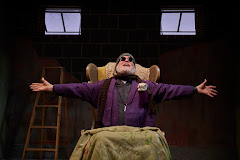




























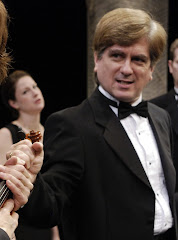
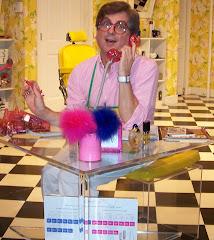
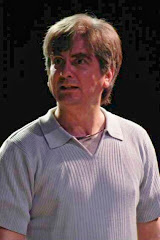
,+Olney+Theatre+Center,+2004.jpg)



,+Shakespeare+Theatre+Company,.jpg)
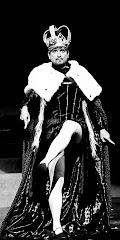

,+Warehouse+Theatre,+1999.jpg)
,+Are.jpg)
,+Everyman+Theatre,2002.jpg)
,+First+Nationa.jpg)
,+Shakespeare+Theatre+Company,.jpg)



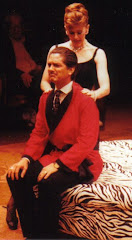

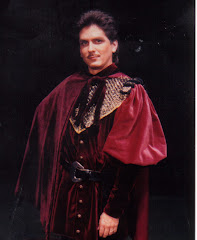
,+Granada+Th.jpg)
,+Globe+Playhouse,.jpg)
,+CSUN,+1976.jpg)
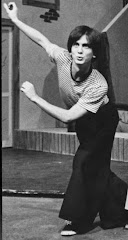


2 comments:
Hmmm. Woman singer. Men and women dancing together. Women dancing in a style in which only men dance. Hooray for Hollywood!
R. Scott,
A brief note first: I have always given priority to religious observance. I've scheduled around Sunday church services when asked to do so. In this case, no one asked! Also, a significant difference between traditional Jewish observance of the Sabbath and traditional Christian observances (there are many varieties, I know!) is that traditional is the aspect of forbidden work. As I understand it, it's not a sin for most Christians to work on a film set on Sunday (though I imagine skipping church would be a problem). For me, the extent of things that I am forbidden to do on the Sabbath is such that it would be impossible for me to work on set without breaking dozens (perhaps hundreds?) of those rules to which I am bound.
A truly multi-religious group would have worked Monday through Thursday, giving Friday off to the Islamic cast and crew, Saturday off to religious Jews, and Sunday off to religious Christians. Why we're not all taking the same day is beyond me, especially considering it all originated in the same place!
Anyway, that was supposed to be a brief note.
Here's what I really wanted to say:
This wedding scene is interesting, in that it reflects a lot of Hollywood's strange, ambivalent attitude towards Judaism. From the start, Jews who were barred from advertising and publishing and other fields found themselves welcomed in the new, traditionless field of motion pictures. There was no one there to kick them out, so they stayed. As such, Jewish culture and themes entered in to much of early Hollywood, though it was not often that they made their appearance so overtly. When that happened (As in "The Jazz Singer" in 1927), there was a clear anxiety about tradition. Rabbis were always older, sterner men with long beards and little personality. Rabbis are often respected in Hollywood films, but they're also often distant, different, alien creatures.
Jewish weddings, in particular, are depicted oddly (perhaps because so many of those early Hollywood Jews, in their haste to "americanize" themselves, married non-Jews, and therefore had unusual weddings themselves?)
Here, a Rabbi who appears to be extremely 'old-world' is officiating at a wedding where a women sings (more of a contemporary issue -- the woman's voice has not always been problematic to the very traditional Jew), where there is 'mixed dancing' (men and woman dancing together, without a separation between them), etc. On the whole, this isn't entirely an inaccurate picture of a Jewish wedding, but (to a religious Jew) it's still pretty ridiculous.
What fascinates me is that this is actually one of the more 'authentic' depictions of traditional Jewish celebration or worship on the silver screen. There is nothing that I know of that depicts Jewish worship with the reverence and detail that I see in FFC's "The Godfather". FFC's reverence may be angry reverence, in that he underlines religious hypocrisy in that film, but it's still reverence.
It's something that I've been pondering for many years, and something I'm curious to tackle (perhaps in my next film?) What would it mean for Jewish religious tradition to be accurately or honestly depicted in a Hollywood movie? Why is it that Jews who are not traditionally religious don't do the research when they depict traditional practice?
Anyway, that's the ramble.
Have a great week-end!
-Arnon
Post a Comment